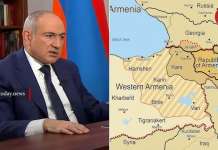By Suren Sargsyan published in The Armenian Mirror Spectator.
During the last months, this has become one of the most discussed issues both in Armenia and foreign think tanks and political circles dealing with the region. In this article, I am not going to discuss whether Armenia should change its foreign policy vector, but to try to raise some questions, to understand the possibilities, problems and perspectives of such a shift.
In general, changing the foreign policy vector is an extremely complex process that has dozens of internal and external components. On the ground, it means changing the established balance of power, which implies a significant change in the rules of conduct of both regional and global players.
One of the most important prerequisites for changing the foreign political vector is the internal political processes of the state, public sentiments and political demands of the opposition. It is also important to know how much the elite of the state is afraid of the loss of power, how many red lines have been crossed in internal political processes and how much influence the geopolitical centers can have on the internal political affairs.
What is different that has led to a change in vectors? Just a decade ago there were two geopolitical centers in the world, Russia and the US. Today we have to deal with a new pole, which is definitely China. It is no coincidence that during the meeting between the presidents of China and the US, Xi Jinping directly stated that the world is big enough and the two can compete in that world. This was a record of two extremely important realities.
First, China offers to share the world with the US, given the new realities, and second, China and the US seem to accept that Russia no longer has the capabilities it once had and is no longer a global player to be reckoned with. However, it is obvious that today Armenia does not want to turn its foreign political vector towards China, but looks cautiously towards the collective West.
There are some internal and external factors that should be taken into account when preparing for a change in the vector of foreign policy by any state. First, in the case of Armenia, the government should have a real desire to change the vector, and not inject a fake agenda before the public. Second, the West should be willing to accept Armenia into its family, including NATO or the EU and be ready to provide Armenia with a security umbrella. How long is the waiting line? Third, Russia should allow Armenia to change vectors (or not be able to prevent it by any available instrument). Fourth, it should be understood that in the case of a change of vector, Armenia will become an ally of the US, which will lead to serious contradictions not only with Russia but also with Iran.
The next factor is a clear assessment of the momentum and geopolitical realities. It is obvious that Armenia is seeking a new guarantor of its security as Armenia cannot survive without support of a global or regional player.
Another important thing to think about is the price that states typically pay for vector change or vector selection. For example, Georgia and Ukraine have been waiting for decades to join NATO and the EU. Both states have paid a certain price to achieve this goal. In Armenia’s case, the question is whether the loss of Artsakh was the price we paid or there is still a price to pay because Nagorno Karabakh was not recognized by the international community. These are just some of the questions we need to find answers to properly assess the opportunities and challenges to protect the country from other types of disasters.












